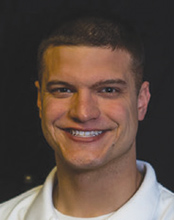Optimizing Executive Functions Through Sleep
Attention Magazine December 2021
Download PDF
In the middle of one of the most important processes in my career, I found myself unable to concentrate on my clients. I was going through the process of obtaining a credential through the Professional Association for ADHD Coaches (PAAC), and while I should have been excited and focused, I felt like I was in a fog. My energy was low, and I felt unable to truly demonstrate what I knew I could do as a coach.
 After feeling exhausted for weeks, I went to my doctor and, after a sleep study, was diagnosed with sleep apnea. Sleeping with a CPAP machine changed (and probably saved) my life. The extreme exhaustion I had been enduring ended, and I was once again able to return to my normal self. This set my career back on track, and I continued to grow as a coach, now newly credentialed as a professional certified ADHD coach.
After feeling exhausted for weeks, I went to my doctor and, after a sleep study, was diagnosed with sleep apnea. Sleeping with a CPAP machine changed (and probably saved) my life. The extreme exhaustion I had been enduring ended, and I was once again able to return to my normal self. This set my career back on track, and I continued to grow as a coach, now newly credentialed as a professional certified ADHD coach.
This struggle with sleep caused serious problems in my life, most notably with my executive functions, those skills that help us get organized, stay focused, and get stuff done. I felt as though no matter how much I slept, I would never be able to function. It was this event that underscored the importance of sleep for me as a human being.
A few months prior to this episode, I had read a fantastic book on sleep and made some changes in my life. However, those changes had little effect on my ability to get quality sleep. In the end, what I needed to achieve maximum executive functioning was a complete picture of my sleep. Only making minor changes was not enough. I needed a sleep overhaul. But, that was my situation. What do you need to achieve better executive functioning? Everyone is in a different place in their relationship with sleep and will need different sleep interventions.
Learn your chronotype
There are many different ways to go about improving your sleep, but one key area is learning your chronotype. In short, your chronotype determines when you naturally want to be awake, when your peak performance time is, and when you want to go to sleep. Traditionally, there are two chronotypes—morning larks and night owls. Most people do not fit into these neat little categories and fall somewhere in between, however.
There are numerous online questionnaires that can assist you in determining your chronotype, including one from Michael Breus, PhD, that will sort you into one of his four chronotypes: Lion (morning type), Wolf (evening type), Bear (in-betweeners), and Dolphin (problem sleepers). These questionnaires can assist you in finding the natural cycle you go through in a 24-hour period, and with this knowledge, you can start to plan your day accordingly. This will lead to getting into bed at a time more conducive to falling asleep in a reasonable amount of time.
Now, how to get a quality night’s sleep is a mystery to many people with ADHD. For years, I struggled to fall asleep at night. As a little kid, I would spend hours lying in bed trying to fall asleep. Nothing seemed to work. No matter what I tried, I would still lay there with thoughts racing around my head, preventing me from shutting my ADHD brain off and falling asleep. Any help I was offered or read about was aimed at the neurotypical brain, but the ADHD brain is different and needs a different solution.
Develop a sleep formula
To help myself fall asleep, I eventually developed a sleep formula: In bed + feeling tired + calm mind = sleep. This formula has revolutionized the way I go about falling asleep.
The first part of the formula is to physically get into bed. This is not easy for those of us with ADHD. Our brains race late at night, and impulsivity keeps telling us to do one more thing. Fighting this impulse may take some extreme measures, such as a bed time alarm to get the process of getting into bed going. It may also take some accountability, whether it’s to a friend, coach, or family member. If you can physically get into bed, you are one step closer to a good night’s rest.
The second part of the formula is feeling tired. Your body actually has to be tired in order to fall asleep. There are many ways to accomplish this. First, get some exercise in during the day. This will burn up your energy and will ensure you do not have excess energy when it comes time for bed. Another way to promote feeling tired around bedtime is to use the sun’s light as a signal for when to be awake and when to be asleep. If you get sunlight during the day and place yourself in darkness in the evening, your brain will naturally think it is time for bed as it gets darker.
Blue lights from electronic screens mimic sunlight. This will trick your brain into thinking it is light out when it is really time for bed. If you must use a screen before bed, try using blue-light blocking glasses. Moreover, if you avoid caffeine later in the day, you will be more likely to feel tired at night. Caffeine is a stimulant that stays in your system a long time. Consuming coffee or another caffeinated beverage will delay the onset of sleep.
The last part of the sleep formula is a calm mind. This is the tricky part and the reason I struggled with sleep for over two decades. Calming down the powerhouse that is the ADHD brain is no easy task. Our thoughts race, especially late at night. How does one achieve a calm mind? The answer lies in making sure you are good and relaxed before bed. Take some time to wind down and get your brain to slow down. Prayer and/or mediation can be excellent way to do this.
Once your calm practice ends and your head hits the pillow, however, you might find your thoughts racing once again. This is why I find something on which to place my thoughts that will capture my attention, but not so engaging that it excites me. For me, it is listening to a specific podcast. For you, it might mean something completely different.
By taking control of your sleep, you can fall asleep faster, wake up more refreshed, and have better executive function skills during the day. To do this, know yourself and your chronotype, and utilize the sleep formula.
 Alex R. Hey, PCAC, is the founder of Reset ADHD, LLC (https://www.resetadhd.com). In the wake of his diagnosis at the age of twenty, he began a casual study of ADHD which, over the years, turned into a passion for learning about ADHD and finding strategies to manage his symptoms. He is the author of Catholicism and ADHD: Finding Holiness Despite Distractions, a book that helps Catholics with ADHD manage their symptoms and grow closer to God in the process. While writing this book, he had the opportunity to support a friend who was being tested for ADHD. Writing the book and supporting his friend helped him discover a passion for helping those with ADHD.
Alex R. Hey, PCAC, is the founder of Reset ADHD, LLC (https://www.resetadhd.com). In the wake of his diagnosis at the age of twenty, he began a casual study of ADHD which, over the years, turned into a passion for learning about ADHD and finding strategies to manage his symptoms. He is the author of Catholicism and ADHD: Finding Holiness Despite Distractions, a book that helps Catholics with ADHD manage their symptoms and grow closer to God in the process. While writing this book, he had the opportunity to support a friend who was being tested for ADHD. Writing the book and supporting his friend helped him discover a passion for helping those with ADHD.
Other Articles in this Edition
How to Say the Right Thing at the Right Time
Finding Focus: Attention Training for High Schools
TOOLS: Teaching Online Organizational and Virtual Learning Skills
Executive Functioning Support for Kids with ADHD
Things to Do By and In Early 2022
Myths About ADHD Can Cause Our Early Deaths
New Research Shows ADHD Symptoms Can Go Up and Down: What Does This Mean?
Those Lovely ‘Mones: The Intersection of ADHD and Hormones
Optimizing Executive Functions Through Sleep
